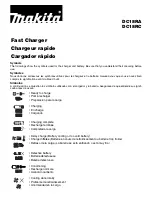
Operation Manual / TPS44-H.. - TPS52-H..
1 Introduction / 1.6 Symbols, definitions
© Copyright 2021 ABB. All rights reserved.
HZTL4037_EN
Rev.G
June 2021
Mode of operation
The turbocharger is a turbomachine and consists of the following main components:
¡
Turbine
¡
Compressor.
These components are installed on a common shaft and form the rotor
and function of the turbocharger
The exhaust gases of the internal combustion engine flow through the turbine casing (10)
and the nozzle ring (09) onto the turbine (08). The turbine (08) uses the energy contained in
the exhaust gas to drive the rotor and thus the compressor wheel (11). The exhaust gases
then reach the atmosphere through the exhaust gas pipe connected to the gas outlet cas-
ing (06).
The compressor wheel (11) sucks in air or a mixture of air and gas through the air suction
branch (01) or the filter silencer. In the compressor wheel (11), the energy required for build-
ing up the pressure is transferred to the air. By flowing through the diffuser (03) and the
compressor casing (02), the air is compressed further and is then directed to the engine cyl-
inders.
The rotor runs in a radial plain bearing bush (07) which is located in the bearing casing (04)
between the compressor and the turbine. The axial thrust bearing (05) is located in front of
the radial plain bearing bush.
The bearings are connected to a central lubricating oil duct which is normally supplied by the
lubricating oil circuit of the engine. The oil outlet lies at the deepest point of the bearing cas-
ing (04).
1.6
Symbols, definitions
Symbols
The following symbols are used in this document:
u
Indicates an action step.
1. Indicates a numbered action step.
→
Refers to a page number
Definition of Note
NOTICE
Note
The note provides advice which facilitates the work.
Page
7
/
109










































